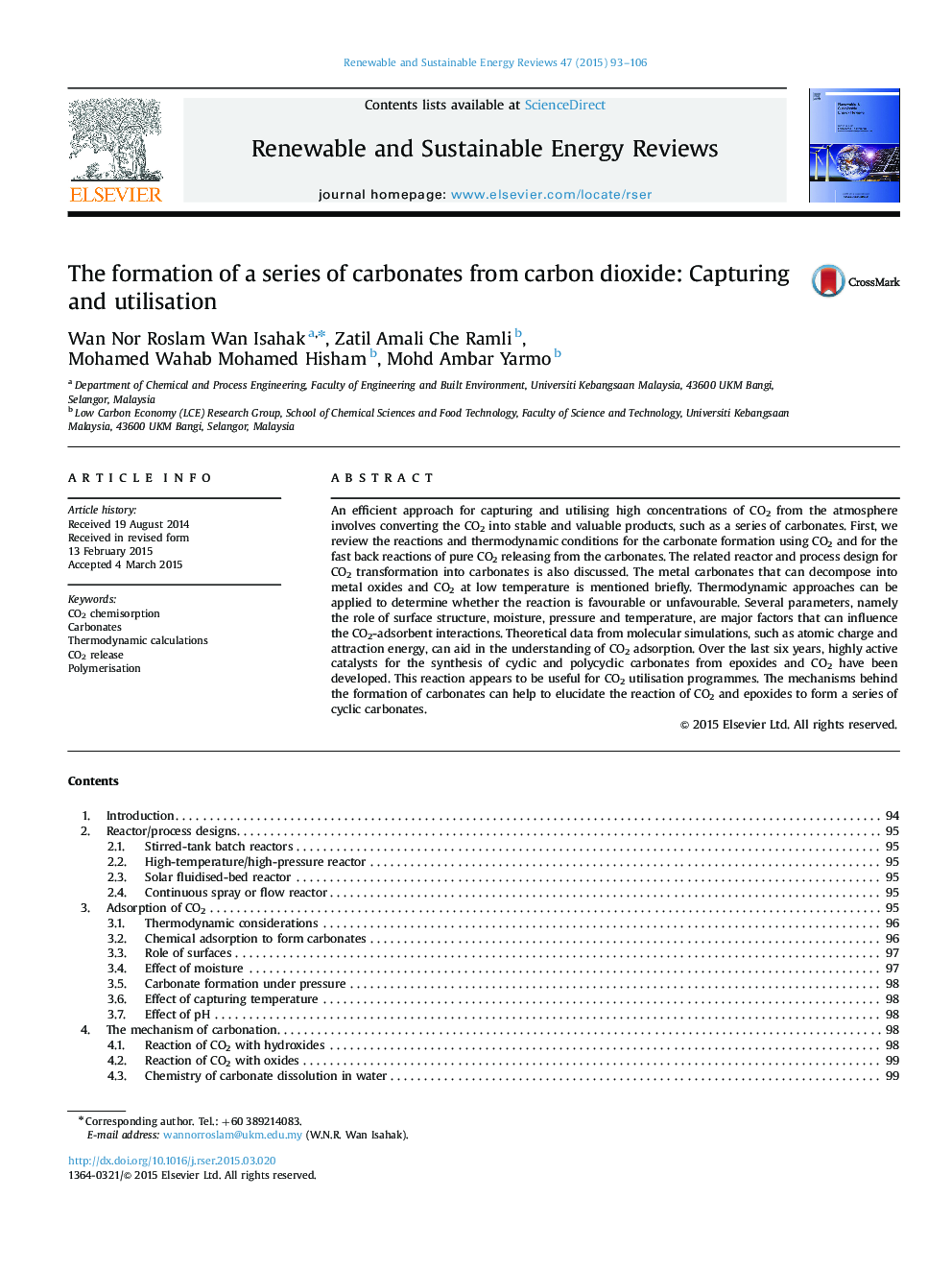| Article ID | Journal | Published Year | Pages | File Type |
|---|---|---|---|---|
| 8116639 | Renewable and Sustainable Energy Reviews | 2015 | 14 Pages |
Abstract
An efficient approach for capturing and utilising high concentrations of CO2 from the atmosphere involves converting the CO2 into stable and valuable products, such as a series of carbonates. First, we review the reactions and thermodynamic conditions for the carbonate formation using CO2 and for the fast back reactions of pure CO2 releasing from the carbonates. The related reactor and process design for CO2 transformation into carbonates is also discussed. The metal carbonates that can decompose into metal oxides and CO2 at low temperature is mentioned briefly. Thermodynamic approaches can be applied to determine whether the reaction is favourable or unfavourable. Several parameters, namely the role of surface structure, moisture, pressure and temperature, are major factors that can influence the CO2-adsorbent interactions. Theoretical data from molecular simulations, such as atomic charge and attraction energy, can aid in the understanding of CO2 adsorption. Over the last six years, highly active catalysts for the synthesis of cyclic and polycyclic carbonates from epoxides and CO2 have been developed. This reaction appears to be useful for CO2 utilisation programmes. The mechanisms behind the formation of carbonates can help to elucidate the reaction of CO2 and epoxides to form a series of cyclic carbonates.
Related Topics
Physical Sciences and Engineering
Energy
Renewable Energy, Sustainability and the Environment
Authors
Wan Nor Roslam Wan Isahak, Zatil Amali Che Ramli, Mohamed Wahab Mohamed Hisham, Mohd Ambar Yarmo,
